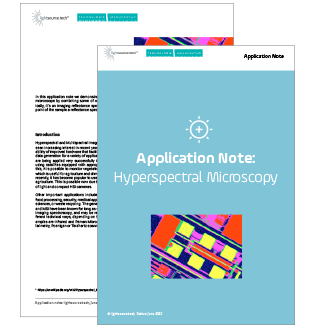Downloads area Technology Manufacture

Application Note: Hyperspectral Microscopy
In this application note we demonstrate a hyperspectral microscope by combining some of our products.

Application Note: Hyperspectral Microscopy
In this application note we demonstrate a hyperspectral microscope by combining some of our products.